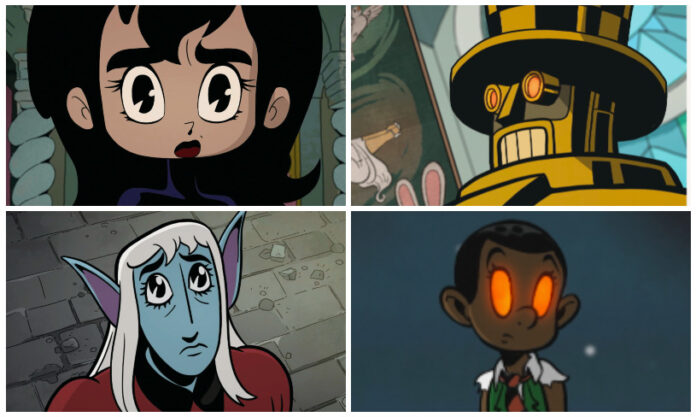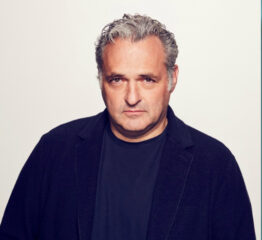|
Getting your Trinity Audio player ready...
|
[adrotate banner=”979″]
Fresh off of the second season of his groundbreaking series Primal, five-time Emmy winner Genndy Tartakovsky is at it again. The famed creator of Dexter’s Laboratory and Samurai Jack is back with a new show aimed at an adult audience that isn’t afraid to wear its heart on its sleeve.
Tartakovsky’s long-awaited, supernatural 2D-animated action series Unicorn: Warriors Eternal follows a team of heroes who cycle through eternity, periodically reawakening in the bodies of unsuspecting hosts to battle an ominous force. Accidentally reawakened in Victorian-era London in the bodies of teenagers, the heroes must find a way to protect the world while also coming to terms with their new, adolescent selves. Our heroes — the powerful sorceress Melinda, the cosmic monk Seng, and the warrior elf Edred — are assisted by Copernicus, a spherical, steam-powered robot able to transform into just about any conveyance imaginable.
Welcome to a Fantastic World
The steampunk fantasy narrative is produced by Cartoon Network Studios and animated in France by Studio La Cachette, which also provided the animation for Primal. The idea for the series came to Tartakovsky nearly 20 years ago, as he was preparing to exit Cartoon Network and wondering what he would do next. “We’ve always talked about doing things cartoony, but still dramatic,” he tells Animation Magazine during a recent Zoom interview.
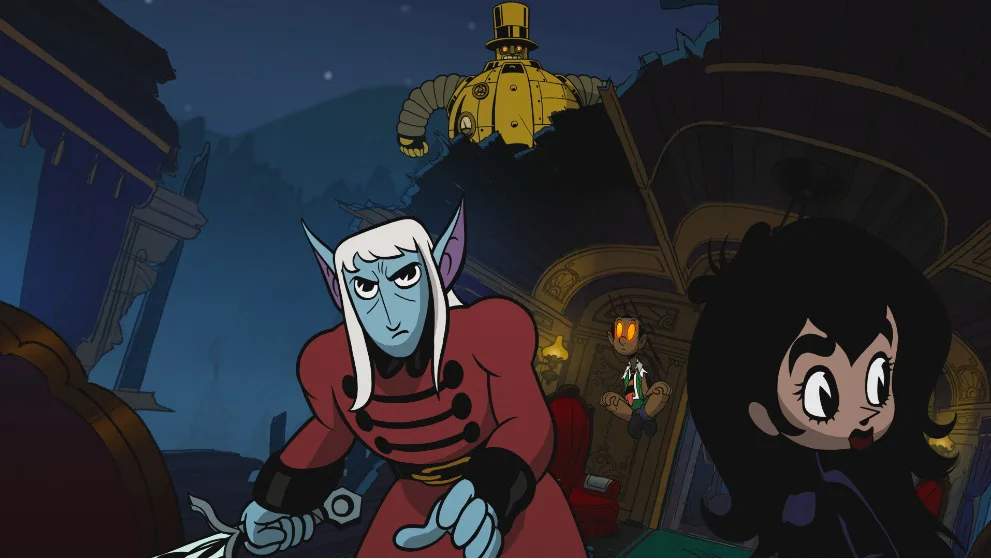
“One of the things that we did through Dexter, Powerpuff and Samurai, and really everything, was this combination of action and drama and comedy. We were relying on the comedy more through the action while trying to do everything in one episode or story. I thought, well, I’d love to do something that’s pushing that even further, but more on the drama and emotional action, with comedy taking a slight backseat.”
Disney’s Snow White and the Seven Dwarfs also provided some of the inspiration, Tartakovsky shared. “I always point to the funeral scene in Snow White where you have this really emotional scene and everybody in the audience is crying, but the dwarves are these big, giant-nosed goofy cartoon characters, and you still totally buy into it.”
The first drawing Tartakovsky completed for the project was a rough version of the characters “chasing and fighting this fire spectral train that was alive,” he recounted. “And that kind of sold me that there’s something there.”
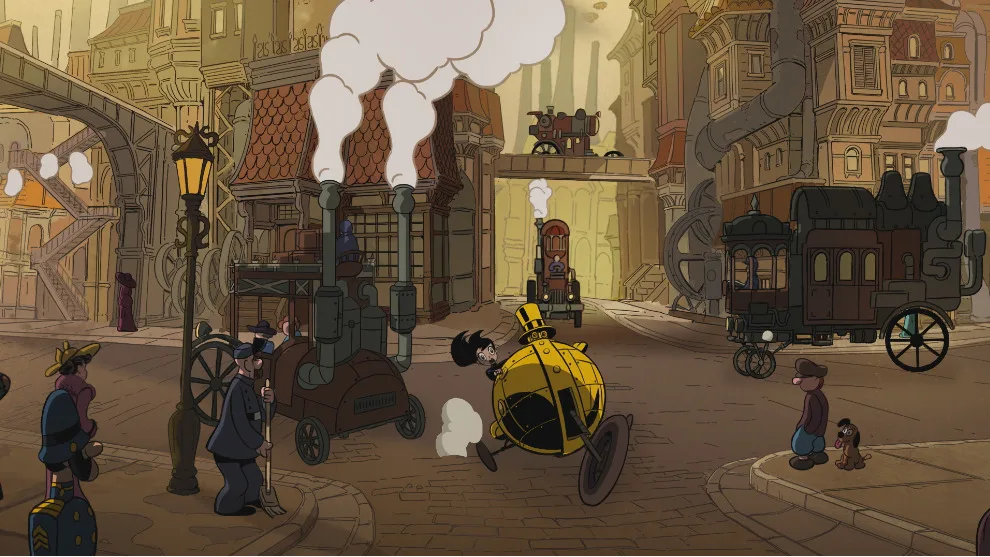
But for years Tartakovsky had trouble finding a buyer for his concept. “Because the story also wanted to be episodic, which back then was a dirty word in television,” he explains. “Because it’s a big idea, a little bit more complicated than anything that I’ve done. And so I couldn’t sell it, and it was really hard. I went through it with Cartoon Network a little bit around maybe 2009 or so, and we did a storyboard, and that gave me even more excitement about it because, oh my God, there’s something here that’s so great! But they didn’t agree and we actually ended up doing Sym-Bionic Titan instead. And then finally something clicked, the time, the planets aligned, and we got a chance to make it.”
‘It’s really a really fun cartoon, first and foremost. I mean, I’ve never drawn so many zombies in my life.”
-
Creator Genndy Tartakovsky
Infused with Fleischer-era curves and loops, the show’s bold, graphic visuals also channel the enlarged eyes and stylized cinematic camera moves of Osamu Tezuka. They were brought to life by longtime Tartakovsky collaborator and Emmy-winner, Stephen DeStefano, who has designed characters for Mickey Mouse, The Looney Tunes Show, The Cuphead Show! and a slew of other iconic properties, including Sym-Bionic Titan.
“When I’m working with a designer, I want the show or the movie to look the way that person draws,” says Tartakovsky. “And so Dexter, I wanted it to look like Craig McCracken’s drawings. Samurai was a mixture between Craig Kellman and Paul Rudish. Titan with Stephen and some of Paul’s stuff. And Unicorn, I wanted it to look like Stephen’s drawings.”
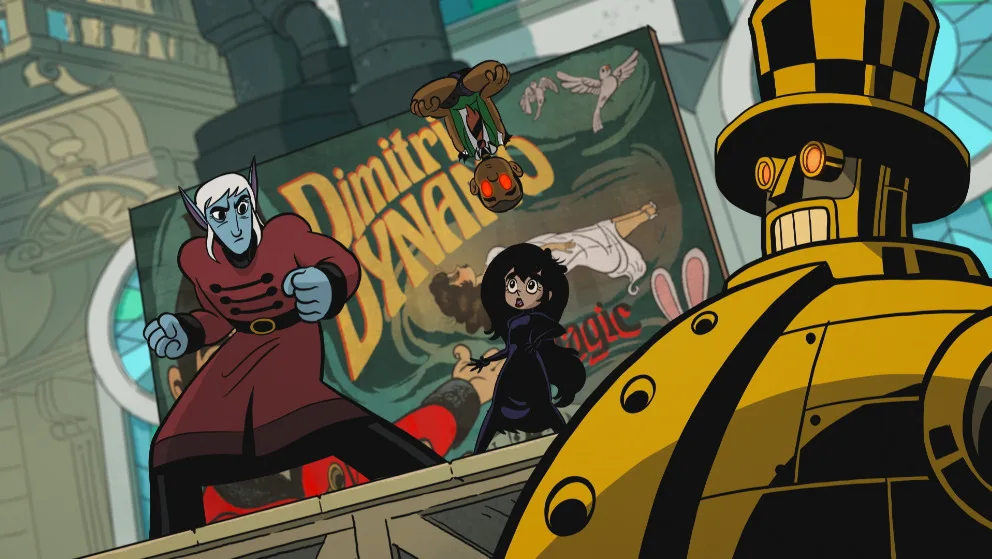
DeStefano says he and Tartakovsky “speak a very similar language” that has deepened their collaboration. “I can look at one of his boards and say, ‘Oh, the X-Men,’ and he’s like, ‘Yeah.’ So I thought, particularly with Unicorn, but also with the early Primal, ‘Oh, Genndy’s sort of seeing a Tezuka thing going on here.’ And that means a lot to me. I love Tezuka, and I love all the things that informed Tezuka.”
Tartakovsky insists the style of the new series is all DeStefano’s, pointing out that he hadn’t even read the Astro Boy comics until the early 2000’s, when he was hired to write a script for the film. “For all of the ‘90s, I was focusing on more graphic stuff like Dexter, Powerpuff, Samurai, and this was a whole new world. And he, of course, is influenced by Disney and Fleischer of the ‘30s. So, there’s this incestuous pool of style, but it really spoke to me and there was a simplicity to it that I really loved and a complexity at the same time.”
Unicorn was the perfect fit for DeStefano’s style, says Tartakovsky. “He really knows the classic way to draw, which is a rarity these days,” he continues.
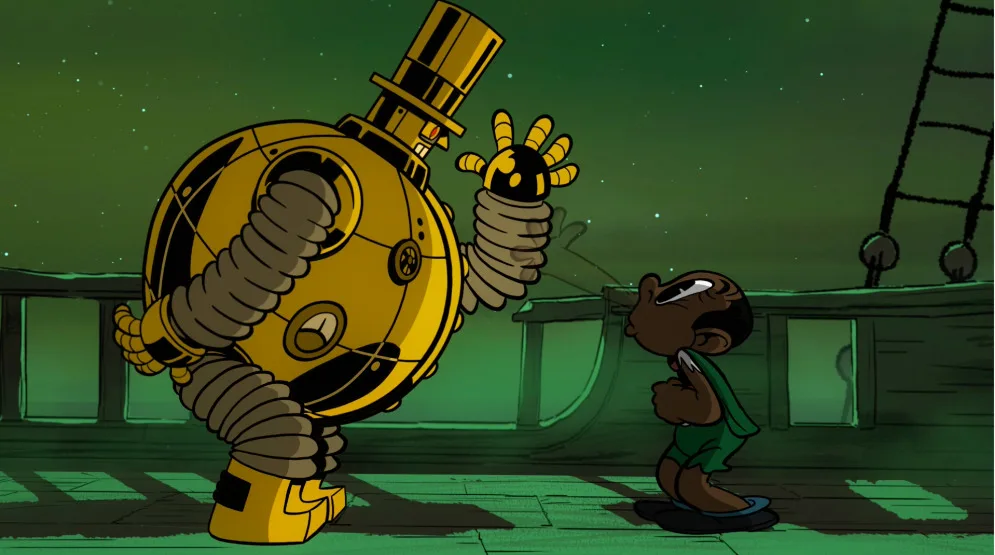
“Samurai Jack looks nothing like Dexter, which looks nothing like Primal, which looks nothing like Unicorn,” DeStefano agrees. “I feel like I should mention the name that should not be mentioned, which is the Popeye movie, because Genndy and I were having a great time on that, and there is still a little nucleus of the Popeye movie in Unicorn. We kept pushing this Fleischer idea and this old-time traditional cartooning, and that didn’t get very far, but all that energy that we were putting into the Popeye movie had to go someplace.”
Tartakovsky wanted Unicorn: Warriors Eternal to “be more cartoony, in the old sense, than anything that I’ve done before,” he said. “The concept is you take this old aesthetic, but you bring it into this contemporary filmmaking story and the way we tell the story that’s very contemporary, and it hopefully will become something new or its own unique thing.”
Melinda, says DeStefano, was particularly fun to draw. “The Unicorn is kind of a strange amalgamation to me,” he continues. “He’s all those things we were talking about, Popeye, the Fleischer Studios, Tezuka. But I would get a board from Genndy and be like, ‘Oh, there’s Genndy’s Jack Kirby drawing.’ And there’s a lot of that with Melinda. There’s a lot of Marvel Comics in her, and she’s completely black, so I would need to compose her as well as I could so that she still reads. She’s dynamic, but she still looks like she pops out of a 1930s cartoon.”
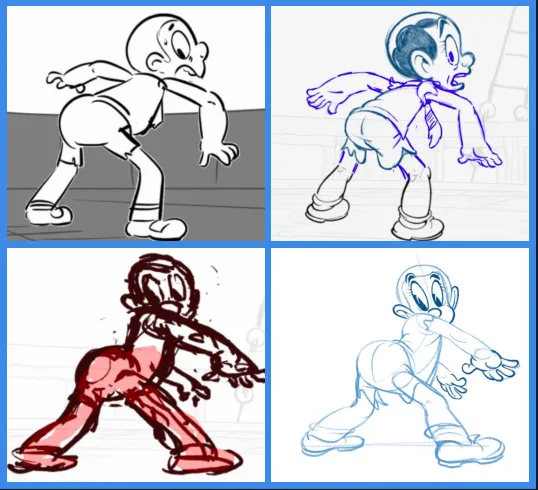
Tartakovsky has reached a point in his career where he says he loves storyboarding. “In my early days, I loved it, but it was so hard because I couldn’t draw well. And I had people like Paul Rudish and Craig McCracken around me who drew so well. I felt so inferior. I could tell the stories, but the drawings were incredibly tasking for me to do it. And now I’m much more comfortable with my drawings and the way I draw and there’s more confidence.”
A Brilliant Storyteller
As the director of Sony Animation’s Hotel Transylvania franchise, and the forthcoming adult animated comedy feature Fixed, as well as his work on television series from Dexter’s Laboratory to Primal, Tartakovsky has more than proven his ability to create engaging stories for audiences of all ages.
“This one landed in this more emotional, conflicted, slightly more mature themes range. That’s what felt right for it,” he said. “It didn’t feel like we needed the violence that we had in Primal. It wanted to find its own tone. So, it’s more dramatic and emotional.”
‘I feel like I should mention the name that should not be mentioned, which is the Popeye movie, because Genndy and I were having a great time on that, and there is still a little nucleus of the Popeye movie in Unicorn.’
-
Character designer Stephen DeStefano
Tartakovsky also says this series is the most complex story he’s ever undertaken before. “That was very challenging and interesting, and I think it’ll be fun to watch this style. So, I want people to fall in love with the characters. I want them to enjoy the style. I want them to enjoy this type of animation.”
But in the end, “It’s a really fun cartoon,” he says. “And it is a cartoon. That’s one of the things that’s great about it. It’s got a lot of heart — a lot of depth to it. It’s got a lot of human drama. But first and foremost, it’s a really fun cartoon. I mean, I’ve never drawn so many zombies in my life.”
Unicorn: Warriors Eternal premieres on Thursday, May 4 at midnight on Adult Swim and the next day on HBO Max.
Watch the trailer below:




